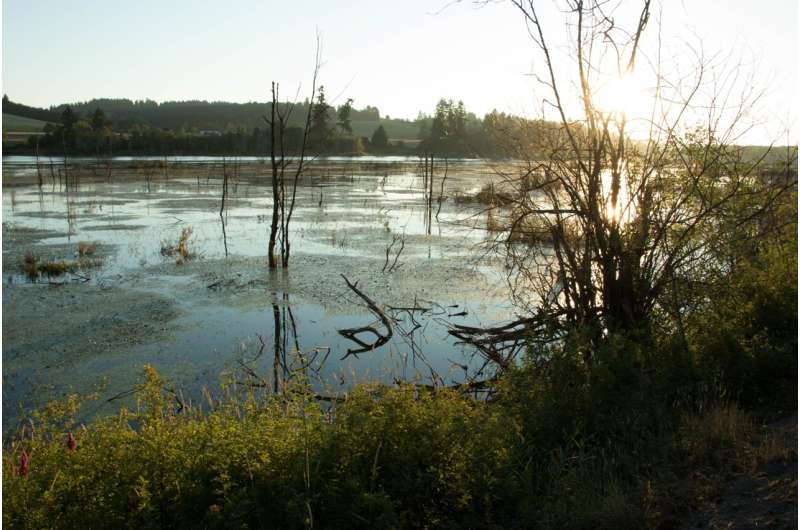

As the highest plateau in the world, the Qinghai-Tibet Plateau has large areas of marshes, which have important effects on the biogeochemical cycle and carbon balance. As an important functional parameter of marsh wetland ecosystem, net primary productivity (NPP) of vegetation is an important indicator to measure the carbon sequestration potential of marsh wetland.
Climate change significantly affects the NPP of marsh wetland vegetation, and then affects the carbon fixation of marsh wetland. Until recently, the vegetation NPP changes of marsh and its response to climate change in the Qinghai-Tibet Plateau remained unclear.
Recently, a research team led by Prof. Jiang Ming from the Northeast Institute of Geography and Agroecology of the Chinese Academy of Sciences analyzed the spatiotemporal change in marsh NPP and determined its relationship with climate factors on the Qinghai-Tibet Plateau.
The study was published in Global Biogeochemical Cycles on July 15. It was based on MODIS NPP data and climate data from 2000 to 2020.
The researchers found that the average annual NPP of marshes on the Qinghai-Tibet Plateau increased significantly during 2000–2020, with the most obvious increase in the northeast regions.
Daytime maximum and nighttime minimum temperatures had asymmetric effects on marsh NPP, with a larger positive effect of minimum temperature.
Warmed minimum temperatures in winter and spring significantly increased the annual marsh NPP by reducing the occurrence of freezing injury. In summer, the increasing maximum and minimum temperatures obviously promoted the vegetation growth in marshes. The reason may be that increasing daytime temperature will promote photosynthesis. Although warming at night will lead to enhanced respiration, the abundant water in marshes is prone to overcompensation, which leads to the increase of NPP.
In addition, the study found that in the early growth season, the increase of spring precipitation can promote the growth of marsh vegetation on the Qinghai Tibet Plateau.
This study suggests that the asymmetric impacts of daytime and nighttime temperatures on marsh vegetation should be adequately considered to assess the responses of marsh ecosystem to future climate conditions under the background of global asymmetrical warming between day and night.
“If only the mean temperature is considered, the positive impacts of future warming on the marsh NPP on the Qinghai-Tibet Plateau will be underestimated,” said Dr. Shen Xiangjin, first author of the study.
Aboveground biomass and the spatial distribution pattern of herbaceous marsh vegetation
Xiangjin Shen et al, Asymmetric Impacts of Diurnal Warming on Vegetation Carbon Sequestration of Marshes in the Qinghai Tibet Plateau, Global Biogeochemical Cycles (2022). DOI: 10.1029/2022GB007396
Chinese Academy of Sciences
Citation:
Effects of day and night temperatures on vegetation productivity in marshes of the Qinghai-Tibet Plateau (2022, July 29)
retrieved 29 July 2022
from https://phys.org/news/2022-07-effects-day-night-temperatures-vegetation.html
This document is subject to copyright. Apart from any fair dealing for the purpose of private study or research, no
part may be reproduced without the written permission. The content is provided for information purposes only.